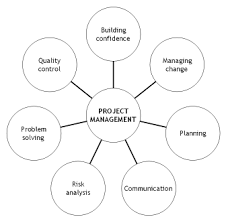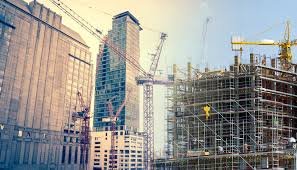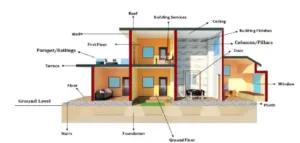Building Commercial Spaces that Work: Key Factors for Success
Building Commercial Spaces that Work: Key Factors for Success
Creating successful commercial spaces involves more than just constructing a building—it’s about designing environments that meet the needs of businesses, attract customers, and enhance functionality. At Carry Construction, we understand that a well-planned commercial space can significantly impact a business’s success. Whether it’s an office, retail store, or mixed-use development, several key factors determine the effectiveness of commercial spaces.
In this blog, we’ll explore the essential elements of building commercial spaces that work and how they contribute to the overall success of your project.
1. Understanding the Client’s Needs

The first step in creating a successful commercial space is understanding the specific needs and goals of the client. This involves thorough consultations and discussions to ensure that the final design aligns with their vision and operational requirements.
Key Considerations:
- Business Functionality: Determine how the space will be used—whether for retail, office, hospitality, or other purposes. Each type of commercial space has unique requirements.
- Brand Identity: Incorporate elements that reflect the client’s brand and corporate identity, enhancing their presence and appeal to customers.
- Future Growth: Plan for future expansion or changes to accommodate the client’s long-term goals and evolving business needs.
2. Strategic Location and Accessibility

The location of a commercial space can greatly influence its success. Choosing the right site involves considering factors such as visibility, accessibility, and proximity to key amenities.
Important Factors:
- Visibility and Traffic: High foot traffic or visibility from major roads can attract more customers and increase business opportunities.
- Accessibility: Ensure the location is easily accessible by public transport and has ample parking space for employees and customers.
- Neighborhood Dynamics: Understand the local market and neighborhood trends to ensure the space aligns with the surrounding area’s needs and characteristics.
3. Functional and Flexible Design

A well-designed commercial space must be functional and adaptable to changing needs. This involves creating layouts that optimize space usage and provide flexibility for different business operations.
Design Elements:
- Efficient Layout: Design a layout that maximizes space and flow, facilitating easy movement and access to key areas.
- Modular Spaces: Incorporate modular or adaptable spaces that can be reconfigured as the business grows or changes.
- Technology Integration: Plan for the integration of technology, such as advanced HVAC systems, smart lighting, and high-speed internet, to enhance operational efficiency.
4. Aesthetics and Branding

The visual appeal of a commercial space is crucial for attracting customers and creating a positive first impression. The design should align with the client’s brand and create an inviting atmosphere.
Key Aesthetic Considerations:
- Interior Design: Use colors, materials, and finishes that reflect the client’s brand and create a cohesive look throughout the space.
- Exterior Appeal: The building’s exterior should be eye-catching and in harmony with the surrounding architecture.
- Signage: Incorporate effective signage that is visible and enhances brand recognition.
5. Compliance with Building Codes and Regulations

Adhering to building codes and regulations is essential for the safety and legality of the commercial space. This includes compliance with local zoning laws, safety standards, and accessibility requirements.
Compliance Aspects:
- Building Codes: Ensure that all aspects of the construction meet local building codes and standards.
- Safety Regulations: Implement safety features such as fire alarms, emergency exits, and accessible facilities for people with disabilities.
- Permits and Approvals: Obtain all necessary permits and approvals from local authorities before commencing construction.
6. Sustainability and Energy Efficiency

Incorporating sustainable and energy-efficient practices into the design and construction of commercial spaces not only benefits the environment but also reduces operational costs for the client.
Sustainable Practices:
- Energy-Efficient Systems: Install energy-efficient HVAC systems, lighting, and appliances to minimize energy consumption and costs.
- Sustainable Materials: Use eco-friendly building materials, such as recycled or locally sourced products, to reduce the environmental impact.
- Green Building Certifications: Aim for certifications like LEED (Leadership in Energy and Environmental Design) to showcase the building’s commitment to sustainability.
7. Effective Project Management

Successful commercial projects require effective project management to ensure that the construction process is smooth, on schedule, and within budget.
Project Management Strategies:
- Clear Communication: Maintain open and regular communication with all stakeholders, including clients, contractors, and suppliers.
- Timely Execution: Develop a detailed project timeline and ensure that all tasks are completed on schedule.
- Budget Control: Monitor project costs closely and manage any changes to avoid budget overruns.
8. Post-Construction Support

After the construction is completed, ongoing support is crucial to address any issues and ensure the space operates as intended.
Post-Construction Services:
- Punch List: Conduct a final walkthrough to identify and address any remaining issues or incomplete work.
- Maintenance Plans: Provide clients with maintenance plans and recommendations for keeping the space in optimal condition.
- Feedback and Adjustments: Gather feedback from the client to make any necessary adjustments and ensure their satisfaction.
Conclusion: Building Commercial Spaces that Work
Building commercial spaces that work involves a comprehensive approach that balances functionality, aesthetics, and practicality. At Carry Construction, we are dedicated to creating commercial environments that meet the needs of our clients, enhance their brand, and contribute to their success.
By focusing on understanding client needs, strategic location, flexible design, aesthetics, compliance, sustainability, effective project management, and post-construction support, we ensure that each commercial project we undertake delivers exceptional results.
Ready to Develop Your Commercial Space?
If you’re looking to build a commercial space that works for your business, contact Carry Construction today. Our experienced team is here to guide you through every step of the process, from concept to completion.
Meta Description: Discover the key factors for building successful commercial spaces, including client needs, design, location, sustainability, and project management. Learn how Carry Construction delivers exceptional commercial projects.
Keywords: Building commercial spaces, commercial construction, project management, sustainable building, commercial design, Carry Construction











Add comment